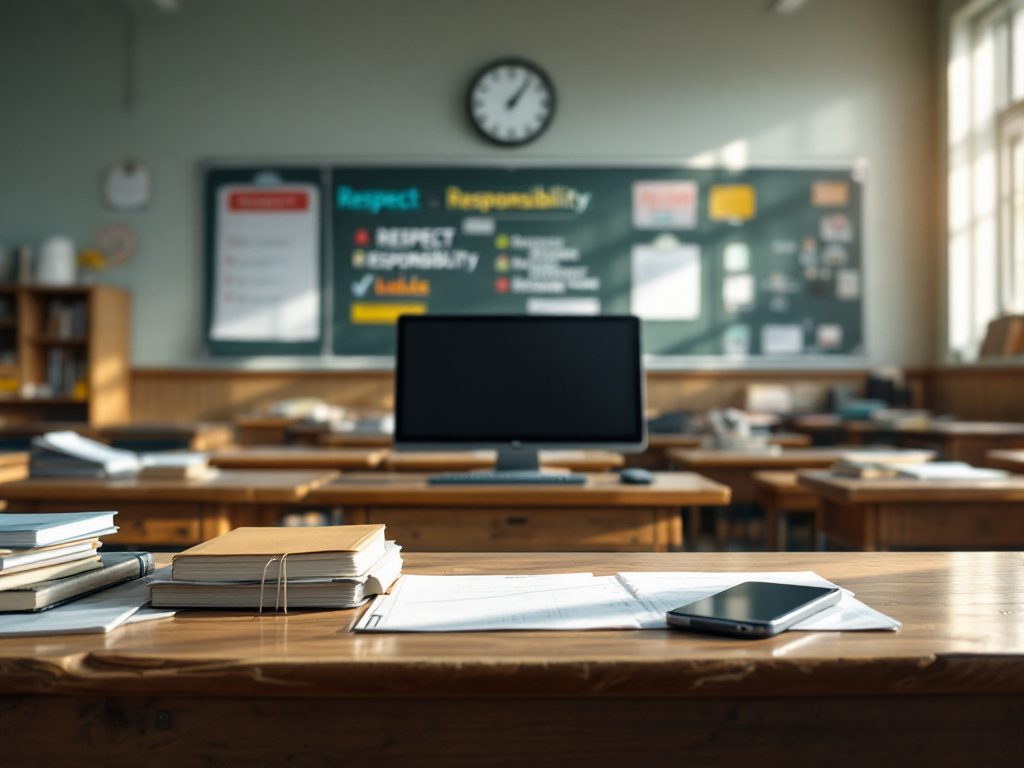The Push to Turn Off: Florida’s ‘Bell to Bell’ Cellphone Ban
Picture a school hallway, the familiar glow of screens dimmed for the first time in years. Florida’s latest education bill marks a profound shift: starting this fall, from the morning bell to the afternoon’s last ring, elementary and middle schoolers will be barred from using cell phones—no TikTok between classes, no covert texting under desks, no scrolling the day away. This isn’t just tweaking an old rule; it’s a sweeping expansion of a previous ban that applied only during instructional time, now extended to cover every hour students spend at school.
The Florida House and Senate passed HB 1105 with large majorities (85-14 and 26-5, respectively), underscoring bipartisan concern over digital distraction in classrooms. The new rules will debut as a pilot program in six diverse high schools—two each from small, medium, and large counties—chosen by the Department of Education to assess impacts on older students. High schoolers, long considered more independent, are the latest focus as lawmakers and educators wrestle with one pressing question: Where is the line between fostering safety and preventing distraction?
Anxiety around screen time isn’t new, but the scope of this latest legislation is. Backers like Rep. Demi Busatta, a Coral Gables Republican, argue the move will restore focus, peer interaction, and academic rigor. “It’s bell to bell,” Busatta declared. Supporters insist constant access to phones has contributed to shorter attention spans and undermined face-to-face social development. Nationally, research by Common Sense Media highlights teens spend an average of over seven hours daily on screens outside of schoolwork, feeding calls for reform.
Balancing Safety, Development, and Freedom: Competing Concerns
Cellphone bans spark fierce debate. Critics often cite student safety—how will families reach their children in emergencies? What happens during field trips or after-school activities? Lawmakers claim schools will maintain procedures for parent communication, using office lines or supervised devices, but opponents worry that, in practice, emergencies may not wait for policy exceptions.
What’s gained when students are required to unplug? “When we’ve piloted cell phone rest ‘zones’ in the past, we saw better classroom participation and deeper friendships forming,” explains Dr. Marjorie Jackson, an educational psychologist at the University of Florida. She believes absence of smartphones can restore “intentional learning” in ways digital nudge notifications undermine. Still, as Jackson points out, “Any policy succeeds or fails based on how it’s implemented and supported—not simply because it exists.”
A closer look reveals the cultural double-bind students face. Many parents, after years of constant connectivity, worry about sudden radio silence, yet yearn for fewer arguments over academic focus. According to a recent Pew Research Center study, over 65% of parents of teens in the U.S. say regulating device use at school is both necessary and frustrating. Generational tensions flare over how to strike a healthy balance between parental oversight, student responsibility, and institutional authority.
“This isn’t just about student discipline. We’re talking about reshaping school culture in ways that challenge how families define safety, privacy, and trust.” —Dr. Marjorie Jackson, UF
Florida’s approach stands in contrast with many progressive school communities that have promoted “device parking” or “tech breaks” instead of outright bans. Some experts warn that heavy-handed restrictions can fuel resentment and stifle responsible digital citizenship. Are we teaching students a healthy relationship with technology—or merely hiding it out of sight?
When State Houses Write Screen Time Rules: Legislative Trends and National Headwinds
The Florida experiment isn’t happening in isolation. Legislatures across the country, spurred by mounting anxieties over youth mental health and digital overexposure, are considering similar clampdowns. In Michigan, House Bill 4141 would force public schools and charter academies to devise formal wireless communications policies. The definition is intentionally broad, covering not just cell phones, but any device capable of texting, browsing, or gaming. Districts would have room to pile on even stricter restrictions if they see fit—while critics warn against a patchwork of rules that undermine student equity across zip codes.
Beyond that, states like Hawaii are inviting parents, students, teachers, and staff to weigh in directly, recognizing that no one-size-fits-all mandate will suit every community. Hawaii’s Department of Education recently launched a statewide survey, a step toward evidence-based reform. “Too often these debates are top-down. We can’t ignore lived experience—what works for a rural school may not work for an urban one,” says Linda Katayama, a high school principal in Honolulu.
What’s at stake isn’t just distraction; it’s the very fabric of school experience—how young people build relationships, manage anxiety, and cultivate digital literacy in a world where screens are inescapable. Progressive educators advocate a more nuanced response: device usage policed in certain zones or periods, enhanced digital citizenship curricula, and mental health support systems to tackle the underlying stressors that fuel compulsive phone use.
National trends spotlight how, historically, efforts to curb youthful distractions—from Walkman bans in the 1980s to Game Boys confiscated in the ’90s—have battled technological progress with mixed results. Yet, as Harvard education expert Dr. David Rosenberg notes, “We’re in uncharted territory. Phones aren’t just gadgets, they’re lifelines, classrooms, and, for some, emotional support.” What happens if these lifelines are abruptly cut, particularly without robust alternatives in place?
A Progressive Vision: Can Schools Lead Without Overreach?
There’s a legitimate crisis—a society awash in screens, with adolescents caught in an escalating arms race of attention. But as states like Florida test no-nonsense bans, the evidence suggests lasting change is grounded in inclusion and dialogue, not fiats. Policies thrive when students, families, and educators build buy-in together—when lessons in self-control outlast the end-of-day bell.
Progressive leadership means moving past easy answers. Supporting student wellness, teaching critical thinking, offering digital literacy—not just imposing silence—reflects the broader mission of public education. For those who remember the “Zero Tolerance” excesses of the past, this moment is a call to learn from history rather than repeat it.

